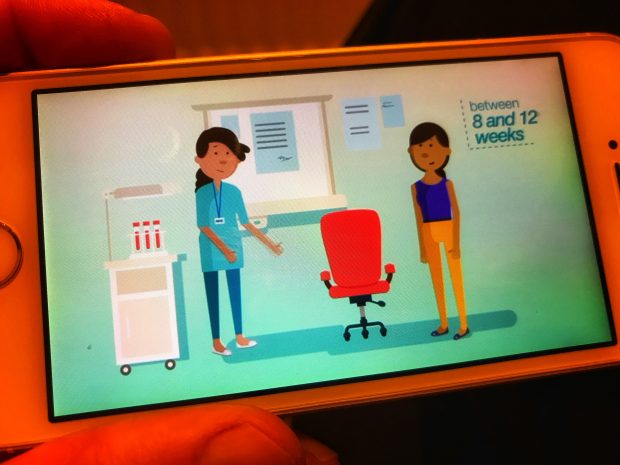
The digital version of STFYAYB includes a 2-minute animation giving an overview of screening that midwives can use as a resource to show women during booking discussions.An updated version of the Screening tests for you and your baby (STFYAYB) information will be available for relevant services to order from 29 March 2021.
The new version includes information about the introduction of non-invasive prenatal testing (NIPT) to the existing screening pathway for Down’s syndrome, Edwards’ syndrome and Patau’s syndrome. Other changes include:
- a new front cover
- updated terminology
- incidence of conditions in the NHS Newborn and Infant Physical Examination (NIPE) screening programme
Preparations for the introduction of NIPT continue at pace.
Award notices have been sent to the laboratories which will be providing NIPT, and contracts are due to be signed later this month with the laboratories providing NIPT, as reported last week.
All of this means the current version of STFYAYB will become obsolete from 1 June 2021.
In preparation for this date, we are urging services to:
- only order additional stock of the current version if you are absolutely sure you need it
- order copies of the updated version of STFYAYB from 29 March 2021 to be ready to start giving out to women from 19 April 2021
Trusts which use an external company to put together 'booking packs' should inform the company they should no longer include a printed copy of STFYAYB.
Overlapping
For 6 weeks, there will be 2 versions of the national information about screening for Down’s syndrome, Edwards’ syndrome and Patau’s syndrome. This is because women who book during this 6 week period may or may not be eligible for NIPT depending on how many weeks pregnant they are when they book.
This means that some women will need the updated information about NIPT, whereas some women will not. We'll be going into more detail in our blog article tomorrow about what women and midwives need to know.
Digital first
We’ve already done huge amounts of work to reduce our print spend as part of the Government's digital by default strategy.
As we said in our recent blog article, maternity services should already have transitioned to using the digital version of STFYAYB by default, with printed versions only provided to women who cannot access the information digitally. From 1 April 2021, we will be limiting orders of print leaflets to 10% of previous volumes as part of the digital first strategy.
Support for transition
There are some fantastic resources to help you in your transition to digital information.
We've just published a new one-stop-shop providing information, resources and support for local antenatal and newborn screening services.
We also publish regular blog articles with information about the move to digital screening information, including this recent article about the support available to local services.
Here’s a reminder about our information to help local services to move to digital, which includes guidance on how to print digital leaflets if people need a physical copy.
Ordering information
For those services who need to order copies of the updated version of STFYAYB, they can do so by using the PHE Screening ordering portal.
Trusts are advised that they will need to recycle any leftover stock of the current version of STFYAYB after 1 June 2021.
More blogs to come
Keep an eye out for blog articles about:
- what midwives need to know ahead of the introduction of NIPT
- NIPT clinical guidance
- how we developed NIPT public information and training
PHE Screening blog
The PHE Screening blog provides up to date news from all NHS screening programmes. You can register to receive updates direct to your inbox, so there’s no need to keep checking for new blogs. If you have any questions about this blog article, or about population screening in England, please contact the PHE screening helpdesk.